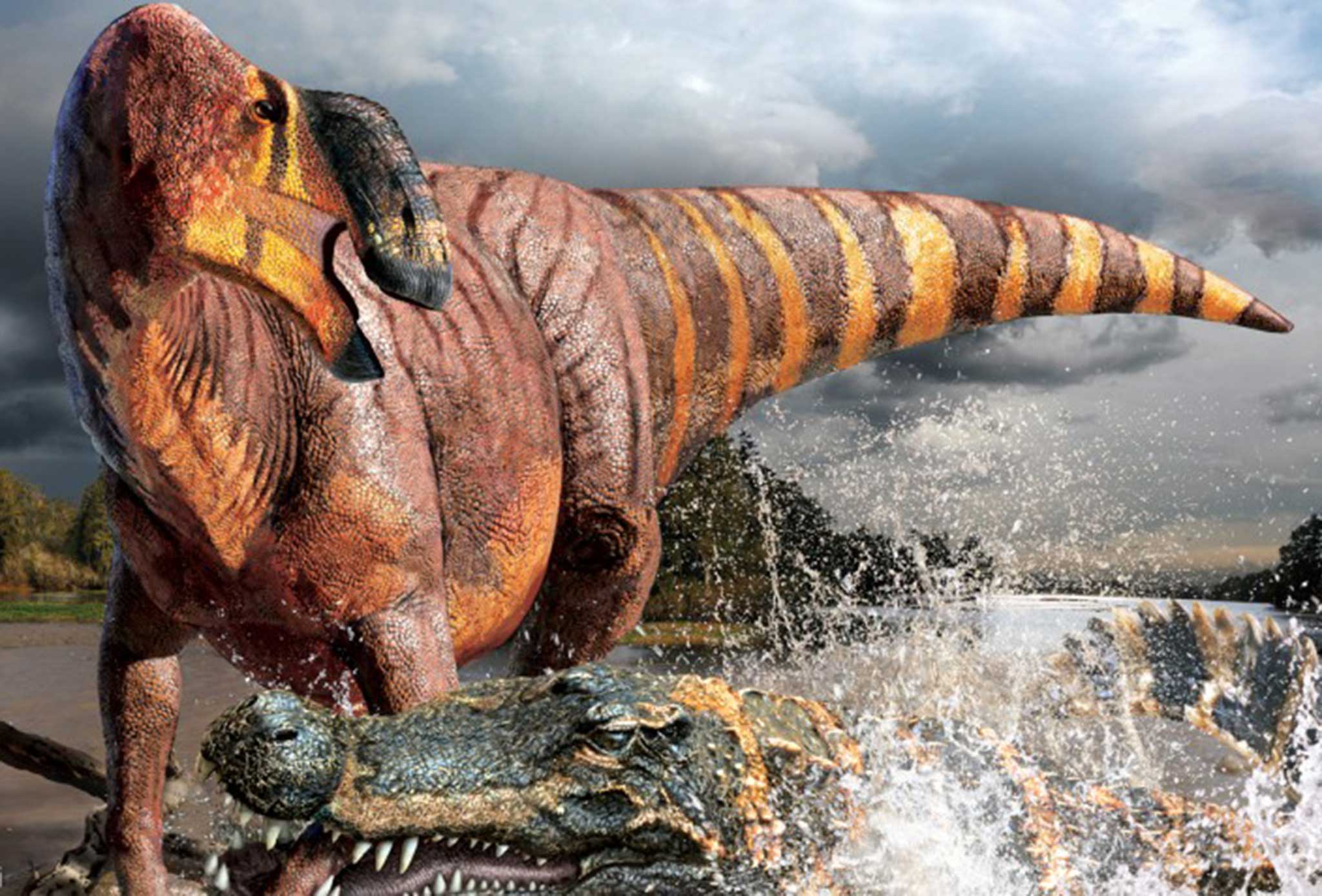'King Nose' dinosaur discovered after being left in storage for two decades
Scientists have said the reason it has such a big nose remains a mystery

The remains of a 30ft-long dinosaur that had a snout so large it was branded "King Nose" have been discovered after being left in storage for two decades.
Scientists came across the unusual duck-billed dinosaur, which has been named Rhinorex condrupus, in storage at Brigham Young University’s Museum, Utah. It was originally excavated from Utah’s Nelsen rock formation in the 1990s.
Dr Terry Gates and Dr Scheetz said it was only as they started to reconstruct the fossil that they realised they had found a new species.
“We had almost the entire skull, which was wonderful,” Dr Gates said, “but the preparation was very difficult. It took two years to dig the fossil out of the sandstone it was embedded in – it was like digging a dinosaur skull out of a concrete driveway.”
Based on the recovered bones, the paleontologists estimated that Rhinorex – which translates roughly to King Nose – was about 30ft long and weighed over 8,500 lbs.
It lived around 50 miles from what is now the Utah coast, in a swampy environment, and is the only complete hadrosaur fossil from the site - thus helping to fill in some gaps about habitation segregation during the Late Cretaceous period.
Unlike other Cretaceous hadrosaurs, which are usually identified by bony crests extending from their skull, Rhinorex instead possessed a huge nose.
“The purpose of such a big nose is still a mystery,” said Dr Gates.
“If this dinosaur is anything like its relatives then it likely did not have a super sense of smell; but maybe the nose was used as a means of attracting mates, recognizing members of its species, or even as a large attachment for a plant-smashing beak. We are already sniffing out answers to these questions.”
Join our commenting forum
Join thought-provoking conversations, follow other Independent readers and see their replies
Comments